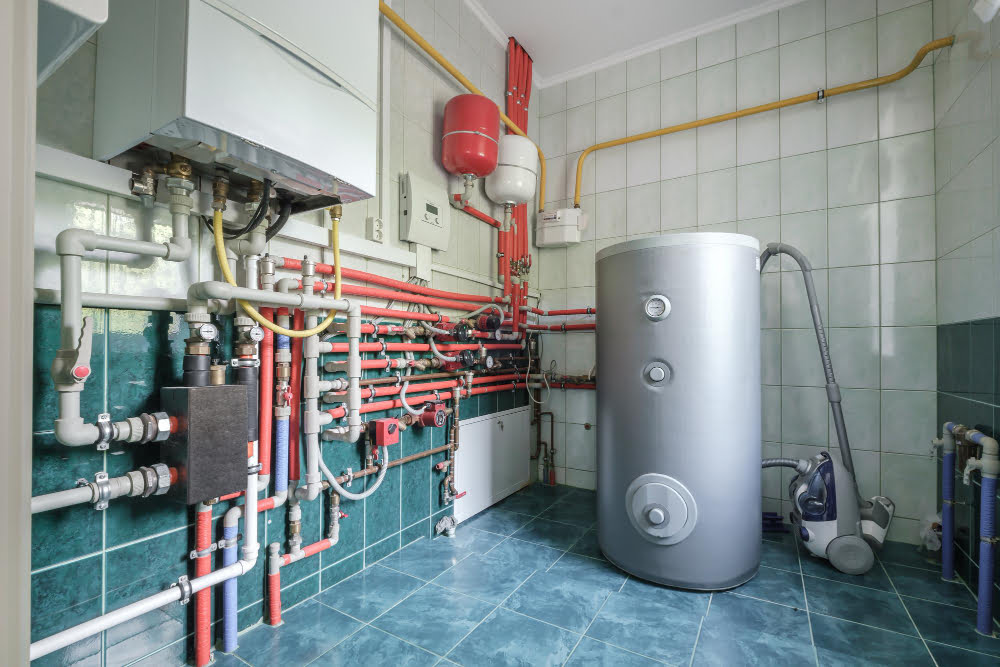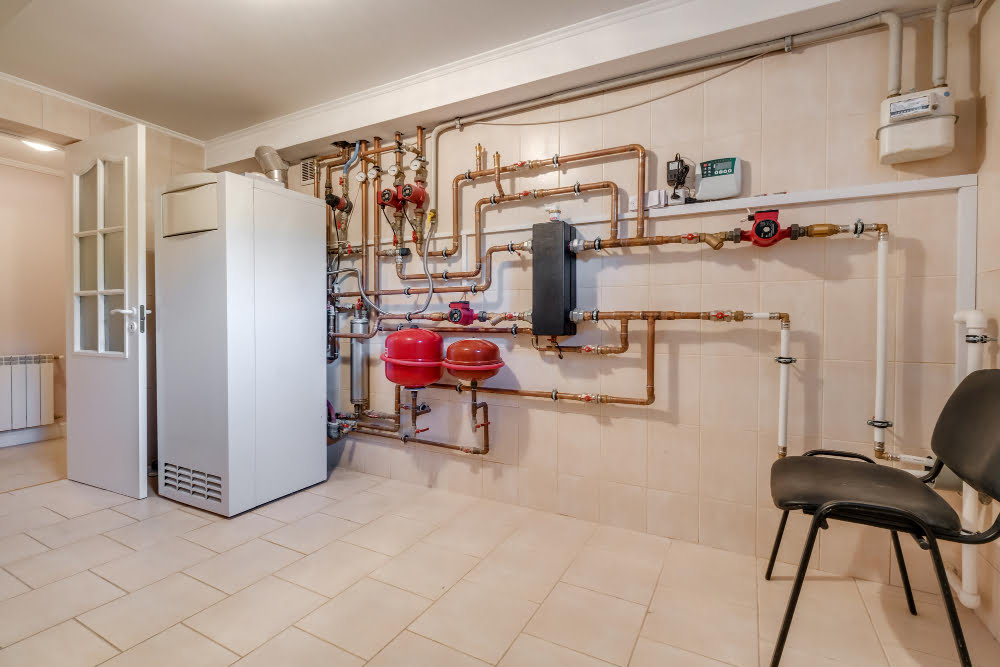Last updated on
Your boiler is an essential part of your home’s heating system, especially during the colder months. When it stops working, it can cause a lot of inconvenience. Here are some troubleshooting tips to help you get your boiler up and running again quickly and efficiently.
Check the Water Level

Check the water level gauge on the boiler to see if it is reading correctly. For water heat, measure the performance of your biomass boiler by monitoring the temperature of the water it produces, checking for any leaks or drips, and keeping an eye on the fuel consumption to ensure it is operating at peak efficiency. If the water level is low, you may need to add water to the boiler.
Check the Power Supply
Begin by checking if the power switch is on and that the boiler is getting power. If it’s not, inspect the circuit breaker and fuse box to look for any tripped breakers or blown fuses. If you find any, reset the breaker or replace the fuse. If the power supply seems fine, but the boiler still isn’t working, you may need to call a professional to inspect the wiring and connections for any issues.
- Inspect the Circuit Breaker and Fuse Box: Sometimes, a tripped breaker or blown fuse can be the culprit behind a boiler’s malfunction. Locate your circuit breaker and check if any breakers are in the “off” position. If so, flip them back to the “on” position. If you have fuses, inspect them to see if any are burnt out.
- Inspect the Power Switch: Ensure the power switch on your boiler is turned on. Sometimes, it can get accidentally switched off, causing your boiler to stop working. If it’s off, turn it back on and see if your boiler starts working again.
- Inspect the Wiring: If none of the above steps work, there may be an issue with the wiring. This could be a more complex problem that requires professional attention. Look for any visible damage to the wiring and call a qualified technician to inspect it further if necessary.
Check the Thermostat

Ensure that it’s set to the correct temperature and in “heat” mode. If it’s set correctly, try turning it up a few degrees to see if that helps. If the thermostat is a digital one, ensure that the batteries are working, as a dead battery could cause the thermostat to malfunction. If your thermostat is not working correctly, it might be time to replace it, or you may need to call a professional to diagnose and fix the issue.
Pilot Light
If the pilot light is out, follow the manufacturer’s instructions for relighting it. However, be sure to turn off the gas supply and wait a few minutes before attempting to relight the pilot light, as a buildup of gas can be dangerous. If relighting the pilot light does not solve the problem, or if you are unsure of how to safely relight it, it’s best to call a professional to assist you.
- The pilot light is a small flame that ignites the gas burner in your boiler. If the pilot light is out, your boiler will not produce heat. First, locate the pilot light; it is typically located near the gas valve on the boiler. If it’s out, follow the manufacturer’s instructions to relight it.
- If the pilot light won’t stay lit after you’ve followed the manufacturer’s instructions, there may be an issue with the gas supply or the thermocouple. The thermocouple is a safety device that senses when the pilot light is lit and allows gas to flow to the burner.
- Another possible cause of a pilot light that won’t stay lit is a dirty or blocked pilot assembly. The pilot assembly is the part of the boiler that contains the pilot light. Over time, dirt, dust, and debris can accumulate in the pilot assembly, blocking the flow of gas to the pilot light.
Gas Supply and Pressure
Make sure that the gas supply valve is open and that the gas meter is reading correctly. If the gas supply is not the problem, check to see if there are any leaks in the gas line. If you suspect a gas leak, turn off the gas supply immediately and call a professional to inspect and repair the leak. Never attempt to repair a gas leak yourself, as it can be dangerous.
If the pressure is low, you may need to add water to the boiler or bleed the radiators to remove any air pockets. If the pressure is too high, you may need to release some of the pressure by opening the pressure relief valve. Be sure to follow the manufacturer’s instructions for checking and adjusting the pressure, as improper adjustment can cause damage to the boiler.
Troubleshooting your boiler when it stops working can be frustrating, but with these tips, you can quickly and efficiently get your boiler up and running again. If you are unable to diagnose the problem yourself, it’s best to call a professional to help you fix the issue.
Recap:



